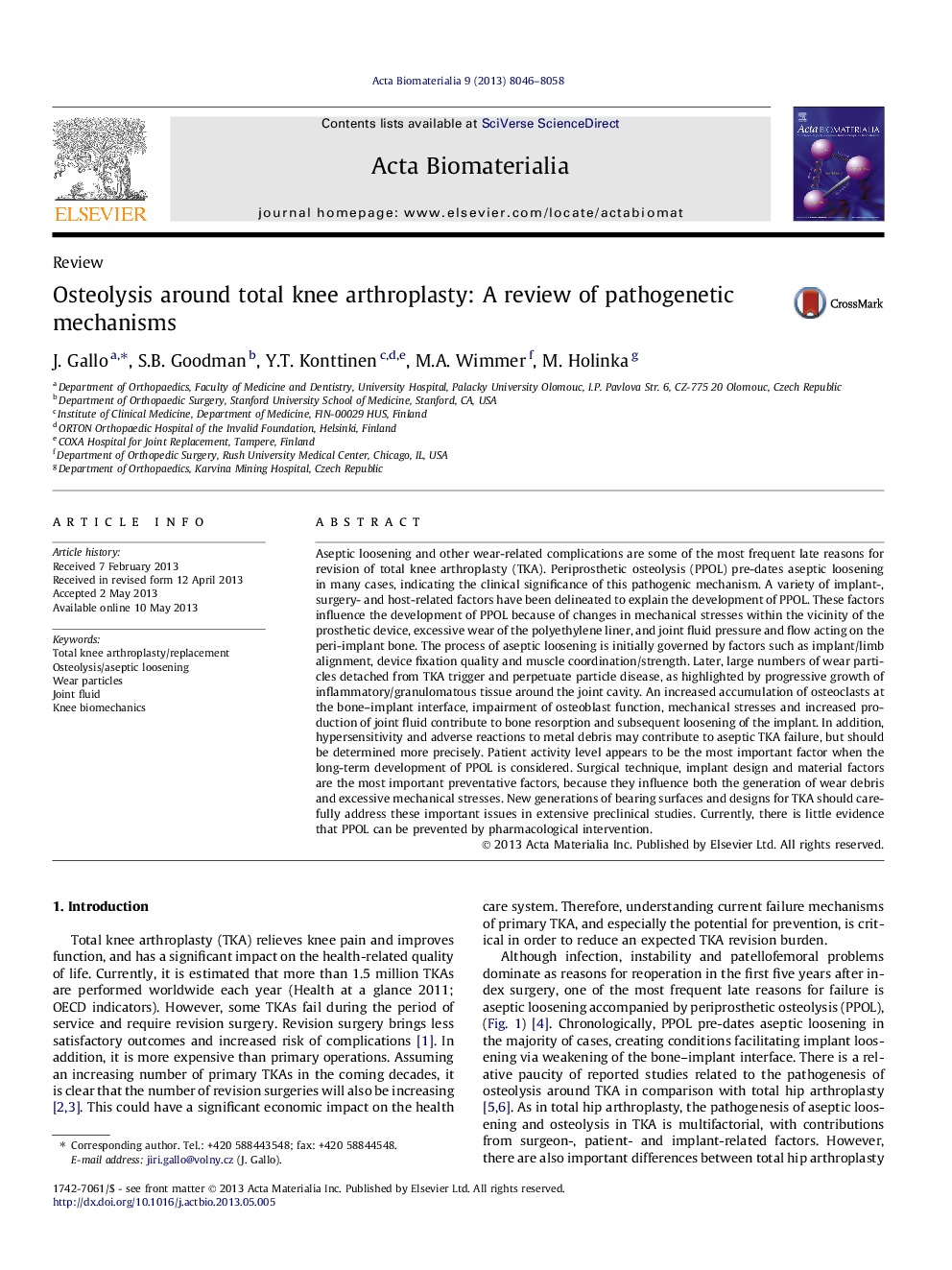| Article ID | Journal | Published Year | Pages | File Type |
|---|---|---|---|---|
| 10159764 | Acta Biomaterialia | 2013 | 13 Pages |
Abstract
Aseptic loosening and other wear-related complications are some of the most frequent late reasons for revision of total knee arthroplasty (TKA). Periprosthetic osteolysis (PPOL) pre-dates aseptic loosening in many cases, indicating the clinical significance of this pathogenic mechanism. A variety of implant-, surgery- and host-related factors have been delineated to explain the development of PPOL. These factors influence the development of PPOL because of changes in mechanical stresses within the vicinity of the prosthetic device, excessive wear of the polyethylene liner, and joint fluid pressure and flow acting on the peri-implant bone. The process of aseptic loosening is initially governed by factors such as implant/limb alignment, device fixation quality and muscle coordination/strength. Later, large numbers of wear particles detached from TKA trigger and perpetuate particle disease, as highlighted by progressive growth of inflammatory/granulomatous tissue around the joint cavity. An increased accumulation of osteoclasts at the bone-implant interface, impairment of osteoblast function, mechanical stresses and increased production of joint fluid contribute to bone resorption and subsequent loosening of the implant. In addition, hypersensitivity and adverse reactions to metal debris may contribute to aseptic TKA failure, but should be determined more precisely. Patient activity level appears to be the most important factor when the long-term development of PPOL is considered. Surgical technique, implant design and material factors are the most important preventative factors, because they influence both the generation of wear debris and excessive mechanical stresses. New generations of bearing surfaces and designs for TKA should carefully address these important issues in extensive preclinical studies. Currently, there is little evidence that PPOL can be prevented by pharmacological intervention.
Related Topics
Physical Sciences and Engineering
Chemical Engineering
Bioengineering
Authors
J. Gallo, S.B. Goodman, Y.T. Konttinen, M.A. Wimmer, M. Holinka,
